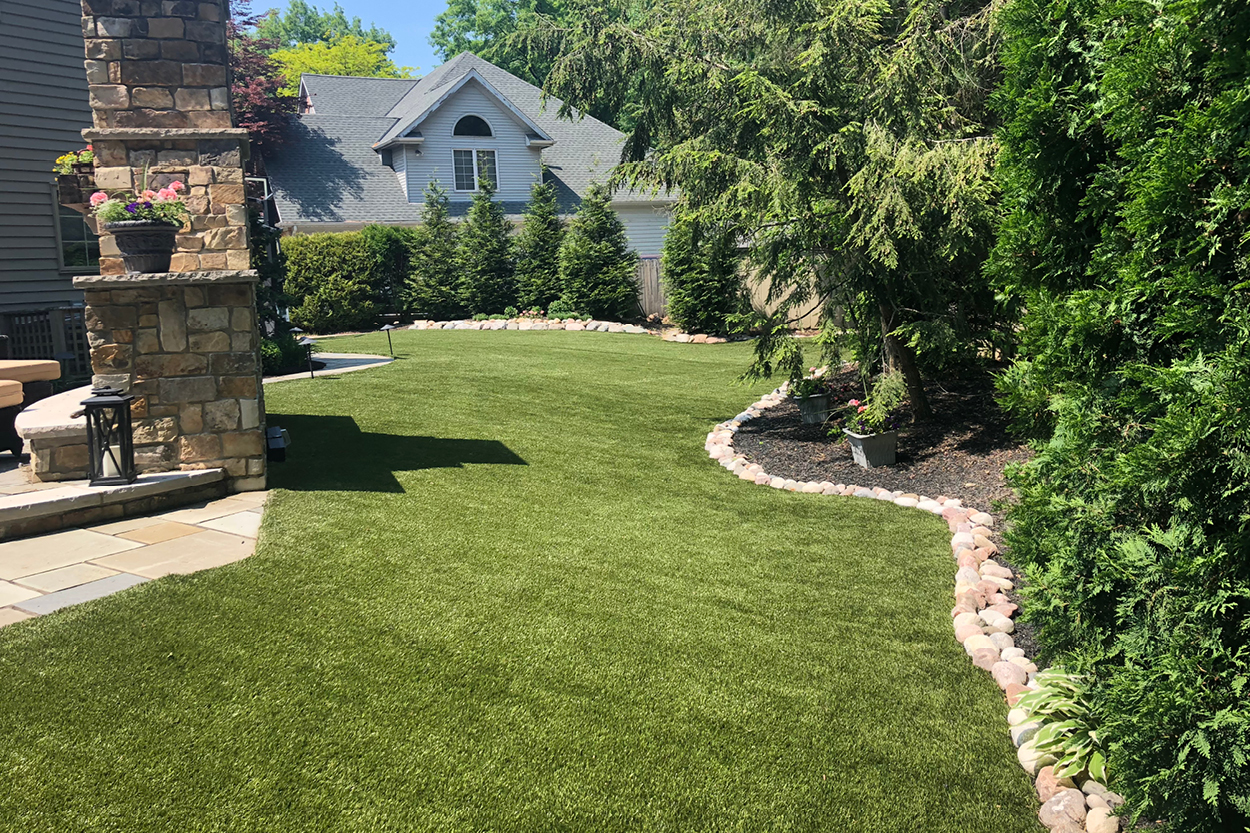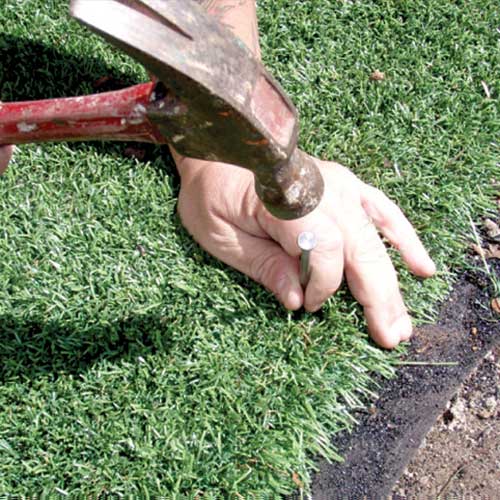Select Reputable Artificial Turf Companies Phoenix for Long-Lasting and Realistic Grass
Select Reputable Artificial Turf Companies Phoenix for Long-Lasting and Realistic Grass
Blog Article
Delve Into the Environmental Advantages of Opting for Artificial Lawn Solutions
The adoption of fabricated turf options presents an engaging chance to resolve pushing environmental difficulties. By dramatically decreasing water usage and decreasing the application of damaging chemicals, these choices not only promote sustainable landscape design but also secure neighborhood communities. Additionally, the reduced carbon impact related to lowered upkeep activities adds to an extra lasting approach to land management. Nevertheless, the effects of these benefits expand past mere preservation efforts, elevating inquiries regarding their long-lasting effect on environment conservation and total environmental equilibrium. Checking out these dimensions discloses an intricate interplay worth considering.
Water Preservation Benefits
Among one of the most considerable advantages of synthetic lawn is its ability to save water. Traditional lawn yards need substantial irrigation, especially in areas prone to drought or water restrictions. On the other hand, synthetic grass does not require watering, significantly minimizing the total need for water sources. This function is particularly beneficial in deserts where water deficiency is a pushing concern.
By eliminating the requirement for regular watering, synthetic grass adds to lasting landscape methods and aids mitigate the ecological effect of too much water usage. In addition, the preservation of water includes the decrease of overflow, which can bring about soil disintegration and river contamination.
Additionally, the setup of synthetic grass allows home owners and municipalities to designate water resources much more successfully, concentrating on essential usages such as alcohol consumption water and agriculture. The shift in the direction of artificial grass not just advertises responsible water use however additionally straightens with broader environmental objectives aimed at preserving natural resources.
As neighborhoods significantly prioritize sustainability, the water conservation benefits of synthetic grass provide an engaging case for its adoption in commercial and property landscape design tasks.
Reduced Chemical Use
The change to artificial lawn significantly lowers the dependence on chemical treatments typically utilized in natural turf maintenance. Standard lawn monitoring typically involves the application of plant foods, chemicals, and herbicides to promote growth and control pests. These chemicals can posture threats to human wellness, regional wildlife, and the environment, adding to dirt and water contamination.
In contrast, fabricated grass gets rid of the demand for these dangerous compounds. By decreasing the release of synthetic compounds right into the community, artificial grass promotes much healthier soil and water systems.
Additionally, the absence of chemical drainage connected with fabricated turf installments helps protect regional rivers from pollution, sustaining marine life and preserving biodiversity. Phoenix turf companies. As communities progressively prioritize sustainable methods, going with artificial turf provides a sensible service that lines up with environmental preservation objectives. Via this shift, residential or commercial property owners can appreciate lush green areas without jeopardizing environmental wellness, leading the way for a more lasting future
Lower Carbon Footprint

Furthermore, the installation of man-made lawn can cause significant water conservation. All-natural grass call for considerable quantities of water for irrigation, which not only includes in the carbon impact linked with water extraction and treatment yet additionally strains local water resources. In contrast, why not try this out synthetic grass requires marginal upkeep, calling for no watering, thereby substantially minimizing water use and its associated power prices.
In addition, the durability of synthetic grass adds to its lower carbon effect. With a lifespan of as much as 15 years or more, the requirement for regular substitutes is decreased, causing much less waste and reduced energy consumption in production and getting rid of standard turf options. Generally, man-made grass provides a sustainable alternative for eco aware landscape design.
Habitat Conservation
Habitat conservation is an important factor to consider in the discussion over landscape design selections, especially when comparing synthetic grass to all-natural lawn. Natural grass lawns commonly call for comprehensive upkeep, consisting of making use of plant foods, pesticides, and herbicides, which can negatively affect local ecosystems. These chemicals can seep into the soil and rivers, hurting native plants and fauna and disrupting neighborhood environments.
In comparison, artificial turf offers a possibility to minimize the eco-friendly footprint of landscape design. By choosing artificial check out this site turf, homeowners can decrease the interruption of all-natural habitats related to typical yard treatment practices. Synthetic grass removes the requirement for harmful chemicals, consequently protecting close-by wild animals and keeping the stability of surrounding ecological communities. Furthermore, the installment of artificial lawn can bring about the conversion of former turf areas right into more biodiverse landscapes, such as pollinator gardens or native plant locations, which can support neighborhood wildlife.
Inevitably, the change to fabricated grass not just preserves water and lowers upkeep initiatives however also promotes a more harmonious partnership in between human tasks and the natural setting, advertising habitat preservation at the same time.
Long-Term Sustainability
Long-term sustainability is an important element in assessing the advantages of fabricated lawn over typical lawn lawns. One of one of the most substantial advantages of man-made turf is its longevity; it can last approximately 15-20 years with very little maintenance, whereas all-natural lawn requires regular reseeding and substitute. This long life minimizes the need for consistent sources, such as water, fertilizers, and pesticides, which are crucial for preserving a healthy yard yard.
Additionally, synthetic grass adds to a reduction in carbon emissions related to yard treatment devices. Traditional grass usually need gas-powered lawn mowers, trimmers, and blowers, navigate to this site every one of which add to air contamination. Turf installation phoenix az. In comparison, synthetic lawn eliminates the demand for such equipment, advertising a cleaner environment
Additionally, the manufacturing of man-made lawn progressively makes use of recycled materials, improving its sustainability account. As producers take on green practices, the environmental impact of synthetic grass remains to diminish.

Conclusion
The fostering of synthetic turf services presents significant environmental benefits, consisting of considerable water preservation, decreased reliance on damaging chemicals, and a lower carbon footprint. In addition, synthetic turf aids in protecting all-natural environments by decreasing land disturbance and promoting long-term sustainability via making use of durable materials. Collectively, these factors highlight the possibility of man-made turf to add favorably to environmental wellness and offer a feasible choice to standard landscaping practices in a significantly resource-conscious world.
In comparison, artificial grass does not require watering, significantly minimizing the total demand for water sources. By decreasing the release of synthetic compounds into the ecological community, artificial turf promotes much healthier dirt and water systems.
Furthermore, the setup of artificial turf can result in considerable water conservation. In comparison, fabricated lawn needs minimal maintenance, requiring no watering, consequently dramatically lowering water use and its associated power costs.

Report this page